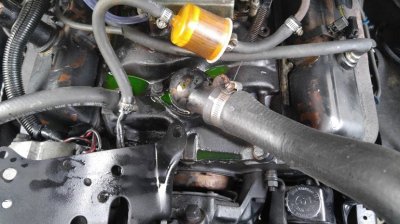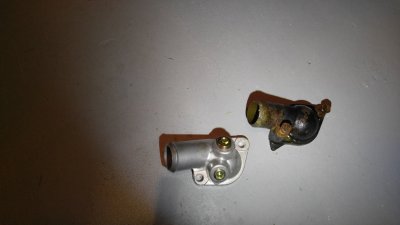That 1850 is a very popular non-emissions carb. So I would not try to make any vacuum hookups other than transmission modulator (if so equipped), vacuum advance, and power brake booster. Also, replace the EGR valve with a block-off plate, or at least verify that it isn't leaking. If you have to pass an emissions test, or must have all the devices installed, that's a different story, and you'll need a different carb.
As for knocking, I'd suggest plugging the vacuum advance port then driving to see if the knock is still there. If it is, you'll have to take a look at initial + centrifugal advance, aka "total" advance. If the knock goes away, then your vacuum advance is too high. That's very common with emission era cars that had zero degrees advance at idle, but have been changed to 10-12.
How it worked back then was when you stepped on the gas, ported vacuum would pull against the canister spring and add 20-26 degrees advance to let the engine wake up and accelerate the car. However, when you add that 20-26 degrees to the current 8 degrees initial advance + centrifugal advance, you might end up with 50 degrees or more. Ex: 8 initial + 25 vacuum + 18 centrifugal = 51. Probably should keep that at or below 46-48 depending on compression, gas quality, and coolant temperature. Then again, the centrifugal may not come all the way in until 3000 RPM or more. But with old trucks, you never know who did what to the distributor. It may even be from a different engine.
As for the switch on the firewall, I don't know what it is. Typically vacuum switches are controlled by coolant temperature, and are known as a TVS -- Thermal Vacuum Switch. These are used to enable/disable vacuum to devices like an EGR valve and a vacuum advance canister. I've been working on a 76 Pontiac that probably has 20 ft of vacuum hose, and 3 TVS switches, one of them multi-port, along with two sensors in the air cleaner housing. Lots of fun, especially since some previous owner or mechanic had connected the hoses improperly.
Sorry if this is too long-winded, but I hope it might help in some way.



